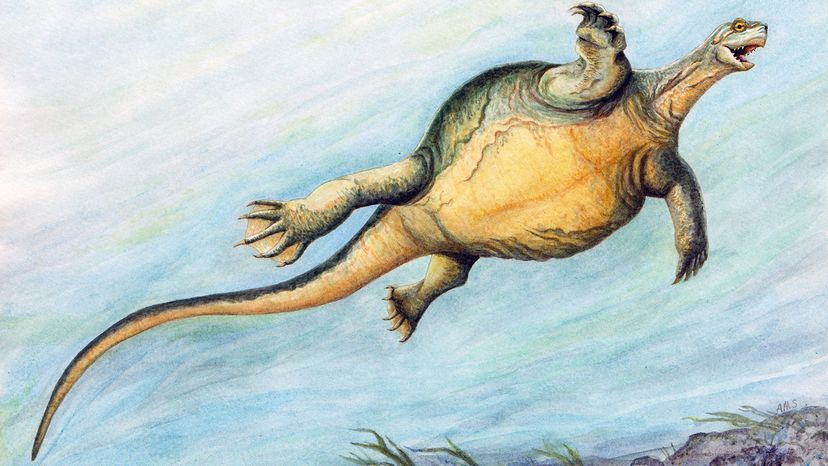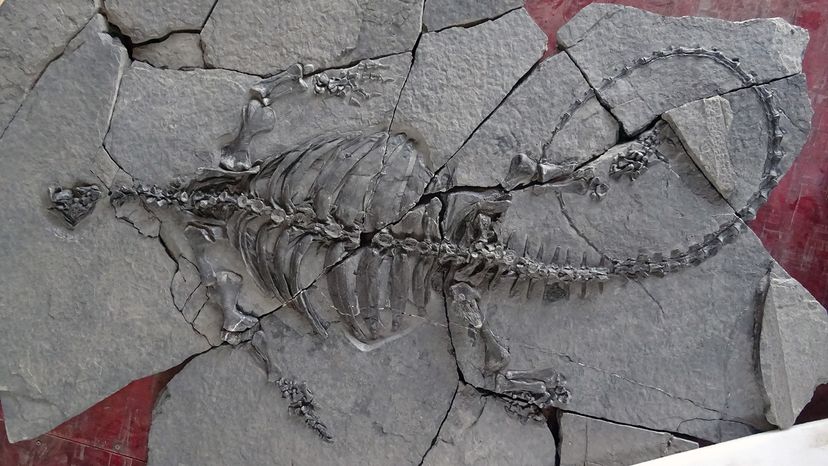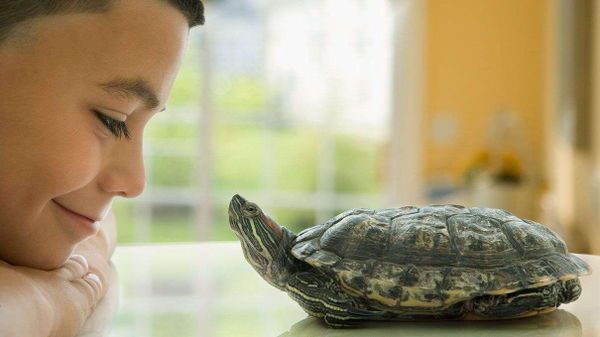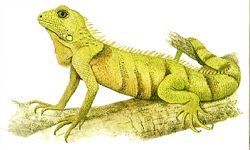
Teeth are a luxury that turtle did away with millions of years ago. In lieu of pearly whites, all living turtle species — be they vegetarian tortoises or eccentric fish-gulpers like the matamata — have horny, toothless beaks. Along with their shells, this shared trait is one of the things that sets turtles apart from lizards, crocodilians and other cold-blooded modern reptiles.
Fossil evidence tells us that early turtles did not gain their shells and lose their teeth at the same time. In 2008, a groundbreaking discovery was announced: Paleontologists had identified the remains of a long-tailed, semiaquatic reptile that lived in China 220 million years ago during the mid-Triassic period.
Advertisement
It was identified as an ancestral turtle, but the beast looked far removed from its contemporary brethren. For one thing, it was missing the upper half of its shell (called the "carapace"), though the bottom half (the "plastron") was present. Also, this Triassic creature had tiny peg-shaped teeth.
Accordingly, it was given the name Odontochelys semitestacea, which means "half shell with teeth."
Now scientists have found what almost looks like the yin to Odontochelys' yang: A primitive turtle with a tooth-free beak, but no trace of a shell. The big news was broken Aug. 22, 2018 in a paper published in the journal Nature.
"This creature was over 6 feet [or 1.8 meters] long, it had a strange disc-like body and a long tail, and the [frontal] part of its jaws developed into this strange beak," Chicago Field Museum paleontologist Olivier Rieppel, one of the paper's co-authors, said in a press statement.

Like Odontochelys, the newfound animal was unearthed in China. The reptile expired there about 230 million years ago. Judging by its anatomy, Rieppel says "It probably lived in shallow water and dug in the mud for food." Eorhynchochelys sinensis — or "dawn beak from China" — is the name that's been coined for the recently-discovered reptile, the oldest beaked turtle that we know of.
The lack of teeth isn't the only thing about Eorhynchochelys that has attracted interest from scientists. There's a pair of holes behind each eye where the reptile's jaw muscles would've been attached. The openings lend further credence to the growing belief that turtles ought to be classified as diapsids, the group of reptiles containing snakes and lizards. Most diapsids have twin sets of holes behind the eyes, but modern turtles don't. Eorhynchochelys suggests that the openings were once present in early turtles and then vanished at some point in the lineage's evolution.
That brings us to another interesting point. Contrary to popular belief, evolution isn't a linear step-by-step process. Look at Eorhynchochelys. We now know that shell-less beaked turtles and toothy, half-shelled turtles lived within 10 million years of each other in the same part of the world.
As study co-author Nick Fraser said in a press release, "[Eorhynchochelys] shows that early turtle evolution was not a straightforward, step-by-step accumulation of unique traits, but was a much more complex series of events that we are only just beginning to unravel."
Advertisement


